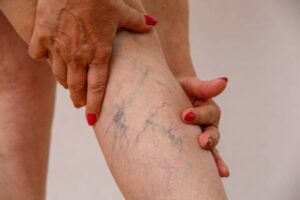Varicose veins are enlarged dilated blood vessels with a bluish-purple appearance that occur when one-way valves in your leg’s veins fail. Varicose vein treatment can reduce their prominence and remove the symptoms they cause, including heaviness in your legs, pain, and leg ulcers.
Non-invasive treatments has a number of highly effective non-surgical treatments available, including ultrasound-guided sclerotherapy, endovenous laser ablation, foam sclerotherapy and ambulatory phlebectomy. Medicare Australia often rebates these procedures. For professional non-invasive varicose vein removal in Adelaide services, click here.
Sclerotherapy
 If you want to get rid of varicose veins for aesthetic reasons or because they are causing pain and other symptoms, sclerotherapy is a good choice. The injections cause the walls of the vein to close, removing the varicose and spider veins. The procedure is performed in a doctor’s office or clinic. It takes about 30 minutes to complete.
If you want to get rid of varicose veins for aesthetic reasons or because they are causing pain and other symptoms, sclerotherapy is a good choice. The injections cause the walls of the vein to close, removing the varicose and spider veins. The procedure is performed in a doctor’s office or clinic. It takes about 30 minutes to complete.
During the treatment, you lie down on your back or stomach. The doctor will mark the area to be treated with ultrasound scanning, and then a tiny needle is injected into the affected vein. The injections may hurt slightly, but they do not last long.
Most people tolerate the procedure very well, and some even fall asleep! The doctor can choose from several chemicals that are available for sclerotherapy. They select the right one based on the size of the vein and your medical history. They may also do a test injection to make sure you don’t have an allergic reaction. For professional non-invasive varicose vein removal Adelaide services, click here.
After the injections, your doctor will put on a compression stocking and bandage. You will have to wear the bandage for 24 hours. Then, you can walk for half an hour. The doctor may recommend that you wear heavy compression stockings for a few weeks after the treatment. You can buy these in medical supply stores or online. You should avoid exposing the treated area to sunlight. You should also take acetaminophen if you experience any discomfort.
The results of sclerotherapy are usually immediate, but it might take a few weeks for the smaller varicose and spider veins to disappear. More prominent varicose veins might require 3 to 4 months to heal. Depending on the number of varicose and spider veins you have, multiple treatments might be needed.
Sclerotherapy is generally considered a cosmetic procedure, so it is not covered by insurance. However, if your varicose and spider veins are causing other medical problems, then you might be able to get coverage from your insurance company.
The best way to find out if sclerotherapy is the right option for you is to visit an experienced vascular specialist. A phlebologist is a medically qualified doctor who specialises in the diagnosis and treatment of venous diseases, including varicose and spider veins. Phlebologists are also trained in a variety of surgical procedures and can provide you with advice about which method is most suitable for your condition. For professional non-invasive varicose vein removal Adelaide services, click here.
They can help you decide if you should use sclerotherapy or another non-invasive procedure to remove your varicose and spider veins. They can also recommend whether you need a combination of non-invasive treatments or surgery. They might also suggest you wear compression stockings after the treatment to improve your results. They will explain how the different treatments work and their benefits and risks. They will also discuss insurance coverage options with you if they are something you are considering.
Varicose Vein Removal Adelaide
Varicose vein removal in Adelaide is a cosmetic treatment that many people are interested in. Especially those who are prone to developing varicose veins due to occupations that require prolonged periods of standing, such as hairdressers, surgeons, nurses, and truck drivers.
Varicose veins develop when faulty valves within the veins allow blood to reflux, which causes the veins to become enlarged. It can cause painful throbbing in the legs or ankles, heaviness and itchiness. It may also lead to more severe symptoms such as skin changes (darkening of the skin), blood clots in the varicose veins or ulcers that do not heal.